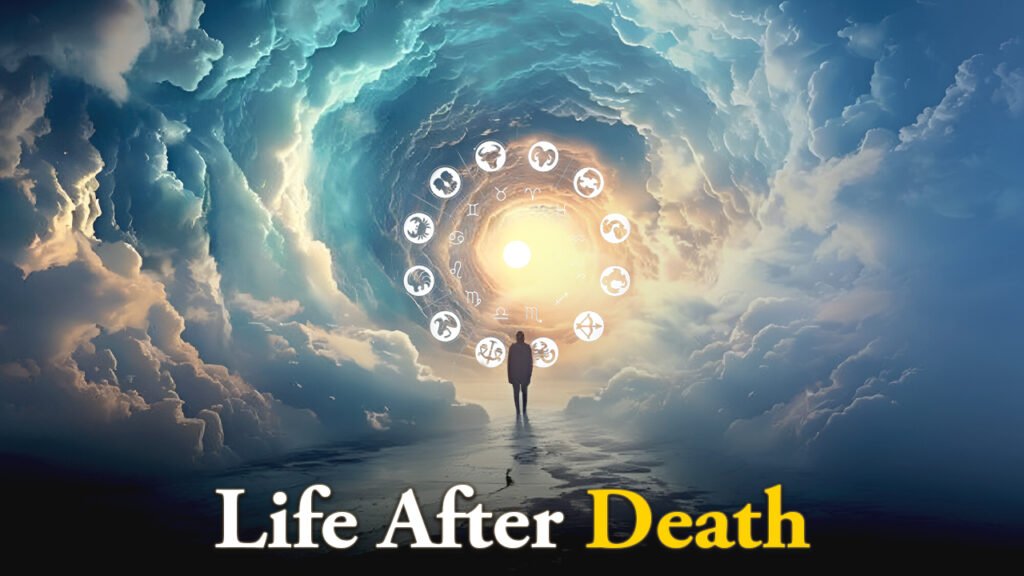Introduction to Life After Death
Death has always been a mystery that has intrigued humanity since time immemorial. What happens when we breathe our last? Is there life beyond the grave? These questions have been pondered upon by philosophers, religious scholars, and ordinary people alike. In the rich tapestry of Indian philosophy, the Vedas offer profound insights into the nature of life, death, and what lies beyond. Let’s embark on a journey to unravel the Vedic wisdom on life after death.
Overview of the Vedas
What are the Vedas?
Before we dive into the Vedic concepts of afterlife, it’s crucial to understand what the Vedas are. The Vedas are ancient Sanskrit texts that form the foundation of Hindu philosophy. They are considered to be the oldest known written texts in human history, with origins dating back to around 1500-1200 BCE.
The four main Vedas
There are four main Vedas:
- Rigveda: Contains hymns and mantras
- Yajurveda: Focuses on ritual offerings and sacrifices
- Samaveda: Includes musical notations and melodies
- Atharvaveda: Deals with spells, medicine, and practical wisdom
Each of these Vedas contributes to the comprehensive Vedic understanding of life, death, and the afterlife.
Vedic concepts of life and death
The cycle of birth and rebirth
One of the fundamental concepts in Vedic philosophy is the cycle of birth, death, and rebirth, known as samsara. According to the Vedas, death is not the end but merely a transition from one state of existence to another. The soul, or Atman, is believed to be eternal and undergoes multiple incarnations based on its karma (actions) from previous lives.
The concept of Atman
The Atman, or the individual soul, is considered to be a part of the universal soul, or Brahman. The Vedas teach that the Atman is immortal and indestructible. When the physical body dies, the Atman continues its journey, either to be reborn in another form or to achieve liberation from the cycle of rebirth.
The journey of the soul after death
The immediate aftermath
The Vedas describe a fascinating journey that the soul undergoes immediately after death. It’s believed that the soul remains in a state of limbo for a short period, during which it can still perceive the physical world but cannot interact with it. This is why many Hindu traditions include rituals to guide the departed soul during this crucial phase.
The path of the ancestors
According to Vedic teachings, souls that have lived a life of good deeds but have not yet achieved liberation follow the “path of the ancestors” (pitriyana). This path leads to the realm of the ancestors, where the soul enjoys a period of rest and happiness before being reborn on Earth.
The path of the gods
For those who have lived an exceptionally virtuous life and have gained spiritual knowledge, the Vedas speak of the “path of the gods” (devayana). This path leads to higher realms of existence, where the soul continues its spiritual evolution. Some interpretations suggest that souls on this path may eventually achieve moksha, or liberation from the cycle of rebirth.
Karma and its influence on the afterlife
The concept of karma plays a crucial role in determining the soul’s journey after death. The Vedas teach that every action, thought, and intention creates karma, which influences not only our current life but also our future incarnations. Good karma leads to favorable circumstances in the afterlife and subsequent rebirths, while negative karma results in challenges and hardships.
The ultimate goal: Moksha
While the Vedas describe various afterlife scenarios, they emphasize that the ultimate goal of existence is moksha – liberation from the cycle of birth and death. Moksha is achieved when the individual soul (Atman) realizes its true nature and merges with the universal soul (Brahman). This state of enlightenment frees the soul from the constraints of the material world and the need for rebirth.
Vedic rituals for the deceased
The Vedas prescribe various rituals to be performed for the deceased, collectively known as antyesti (last rites). These rituals are believed to help the departed soul in its journey after death. Some key elements of these rituals include:
- Cremation: To release the soul from its physical attachment
- Offering of pinda: Rice balls offered to nourish the soul
- Recitation of mantras: To guide the soul on its journey
- Shraddha ceremonies: Performed at regular intervals to honor ancestors
These rituals reflect the Vedic belief in the continuity of life beyond death and the interconnectedness of the living and the departed.
Modern interpretations of Vedic afterlife concepts
In today’s world, where science and spirituality often intersect, many scholars and spiritual leaders offer modern interpretations of Vedic concepts of the afterlife. Some draw parallels between Vedic descriptions of the soul’s journey and near-death experiences reported by people across cultures. Others see Vedic teachings as metaphorical representations of psychological processes of transformation and growth.
For interesting astrology-related videos, subscribe to us on YouTube
Conclusion
The Vedas offer a rich and complex understanding of life after death, emphasizing the eternal nature of the soul and the continuity of existence beyond the physical realm. From the cycle of rebirth to the ultimate goal of moksha, Vedic wisdom provides a framework for understanding the purpose of life and death. While these ancient texts may not answer all our questions about the afterlife, they offer profound insights that continue to inspire and guide millions of people around the world in their spiritual journeys.
Read Also: What Caused Lord Shiva To Take Poison
FAQs
- Do the Vedas believe in heaven and hell?While the Vedas do mention higher and lower realms, they are not equivalent to the Western concepts of heaven and hell. These realms are seen as temporary states rather than eternal destinations.
- How do the Vedas explain reincarnation?The Vedas describe reincarnation as the journey of the soul through multiple lifetimes, driven by karma and the desire for experiences, until it achieves liberation (moksha).
- What role does meditation play in understanding life after death according to the Vedas?Meditation is seen as a tool for self-realization, helping individuals understand their true nature as eternal souls, Life After Death thus preparing them for the journey beyond death.
- Are there any scientific studies supporting Vedic concepts of afterlife?While there’s no conclusive scientific evidence, some researchers have studied near-death experiences and past-life memories that show intriguing parallels with Vedic descriptions.
- How do Vedic teachings on the afterlife differ from other major religions?Unlike many monotheistic religions that posit a single afterlife destination, Life After Death Vedic philosophy presents a more complex view with multiple paths and realms, emphasizing the soul’s ongoing journey towards enlightenment.

